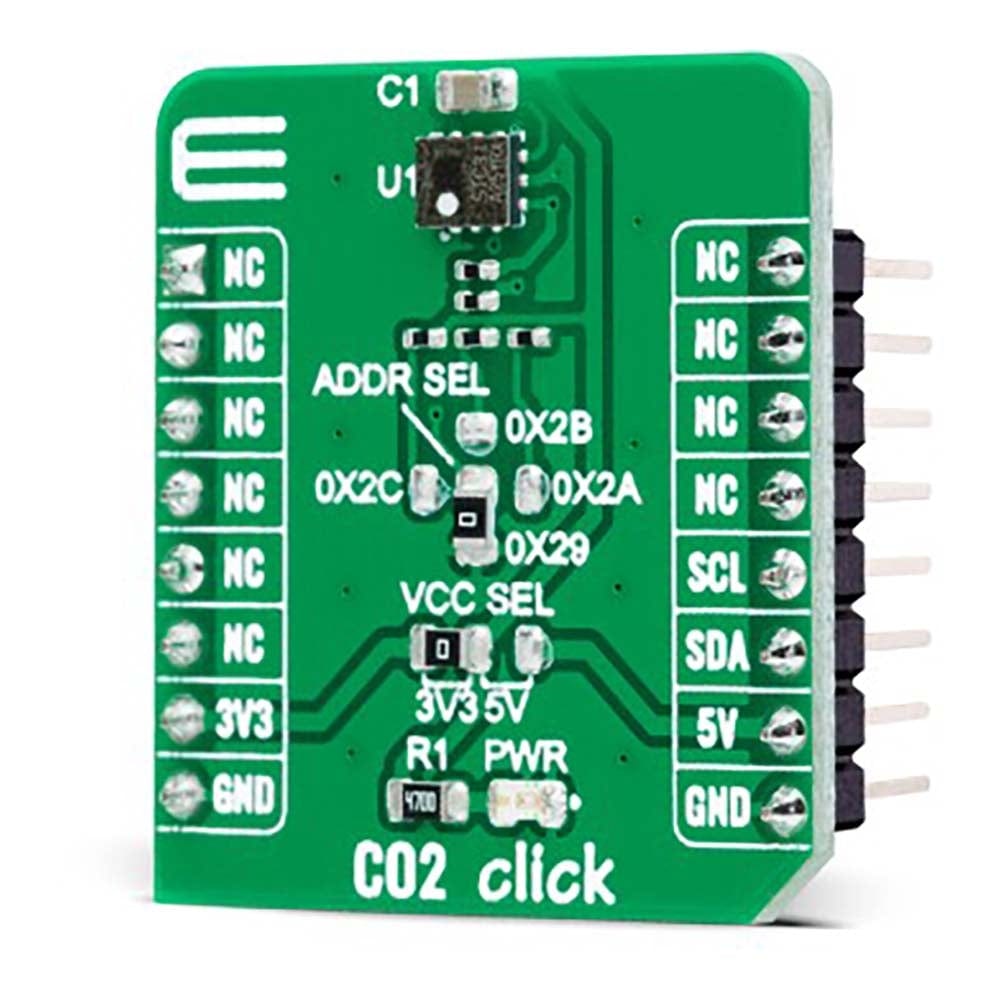
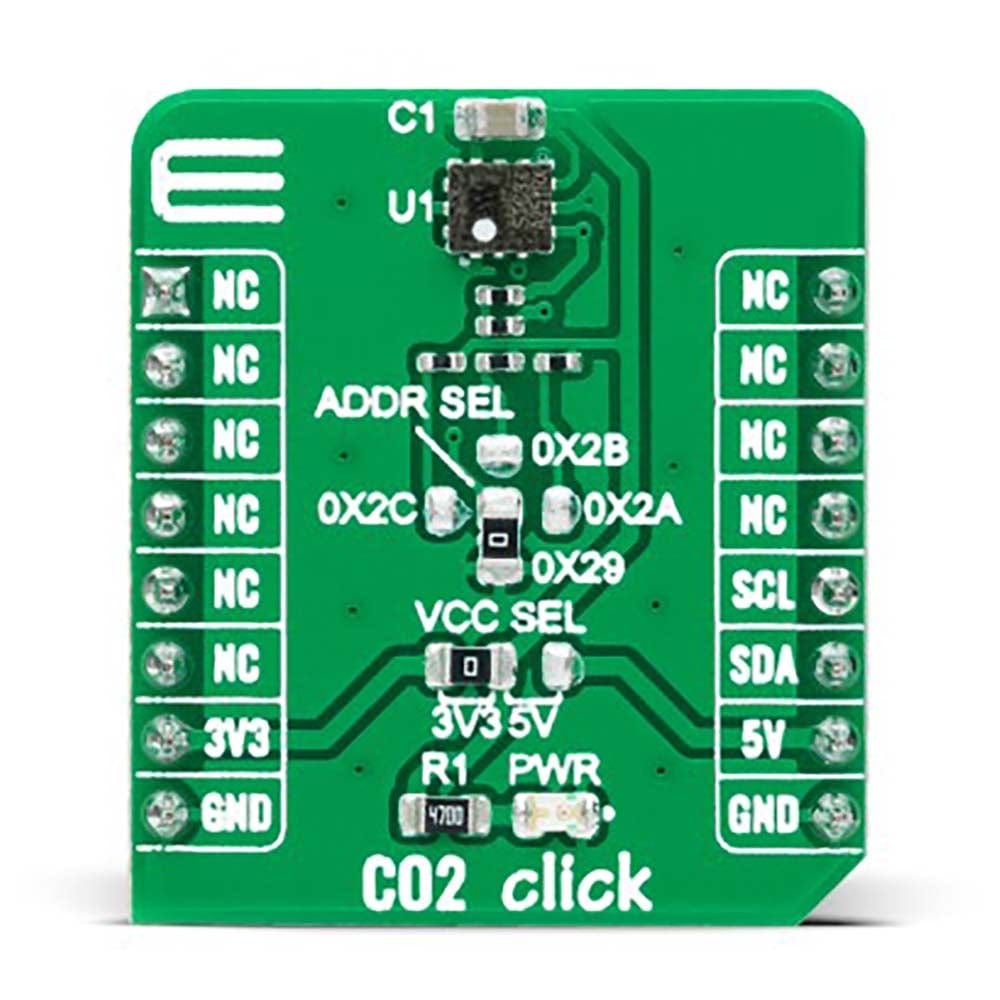
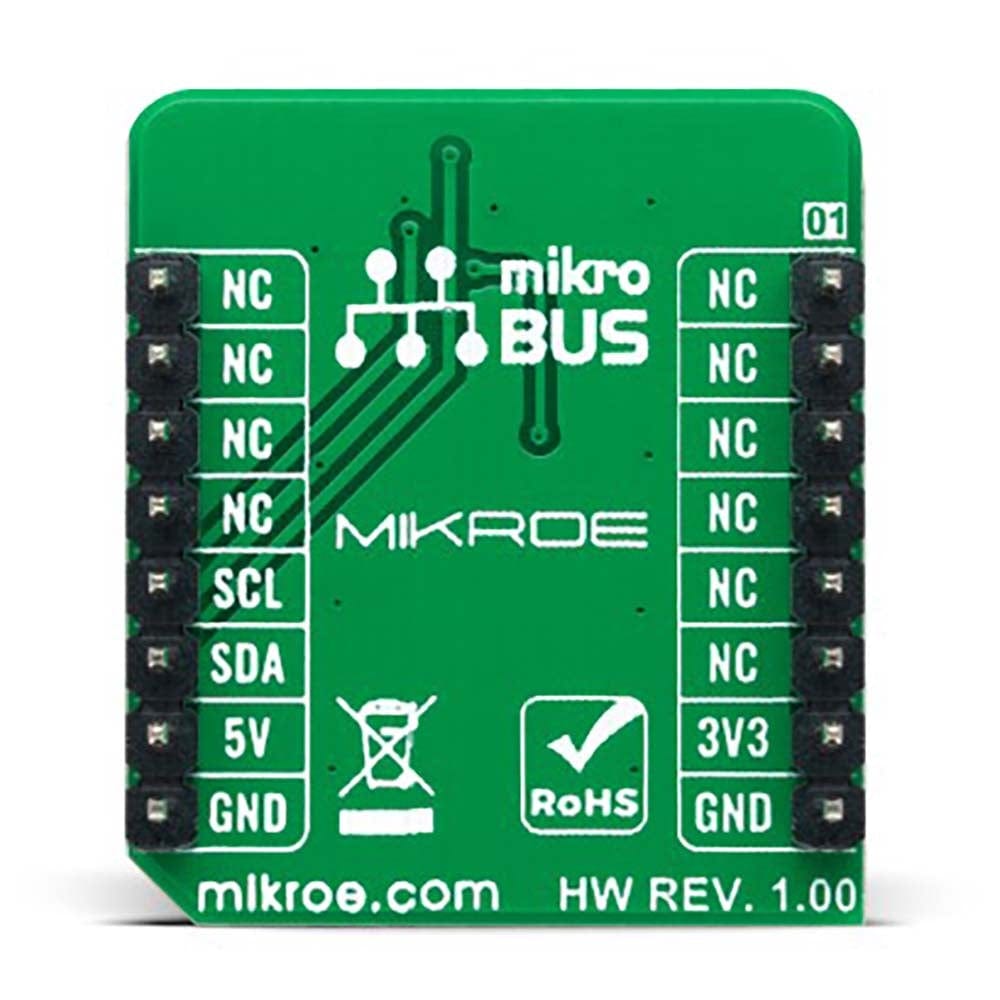
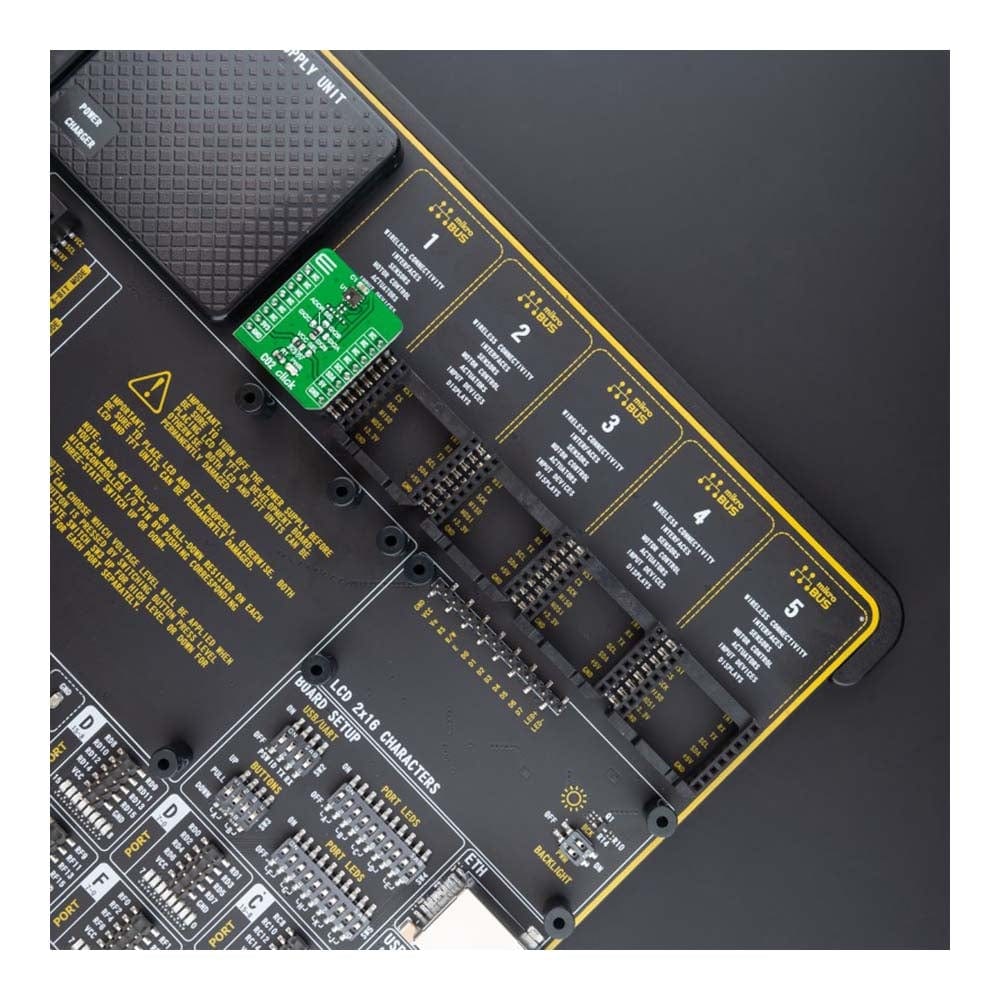
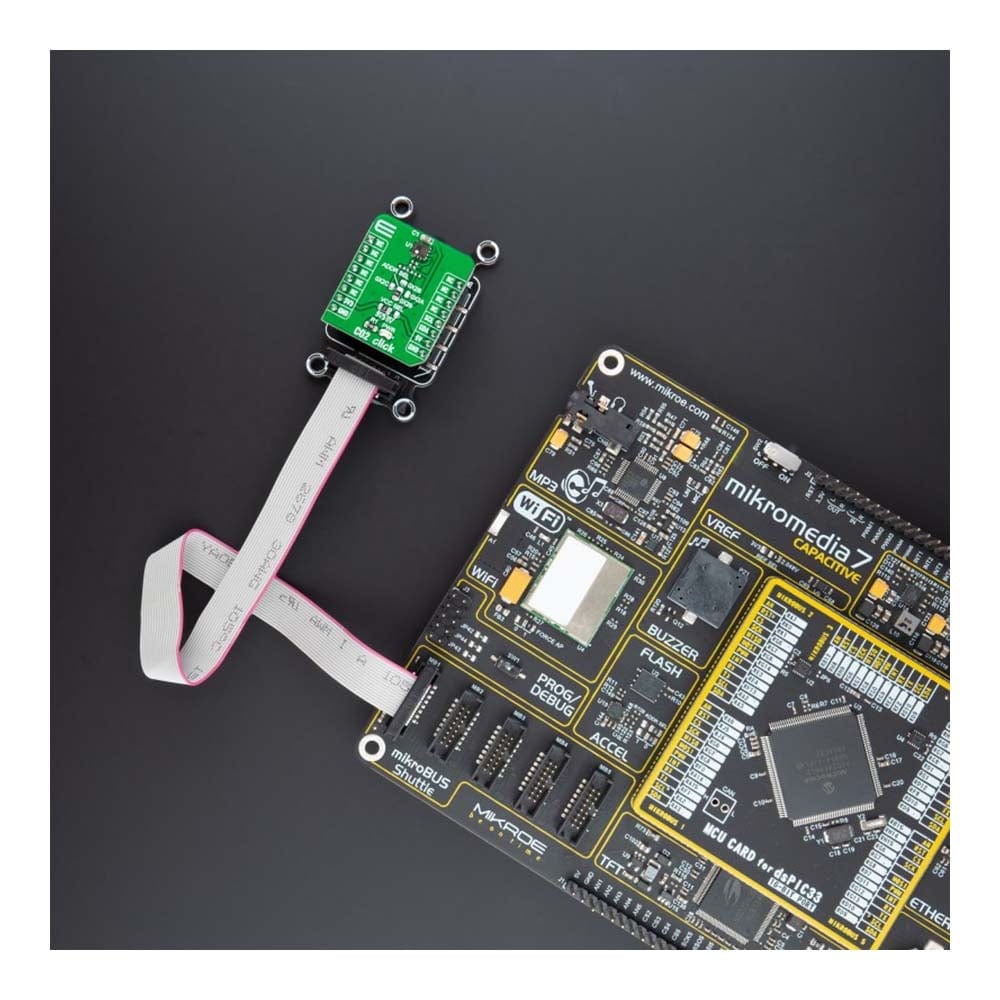
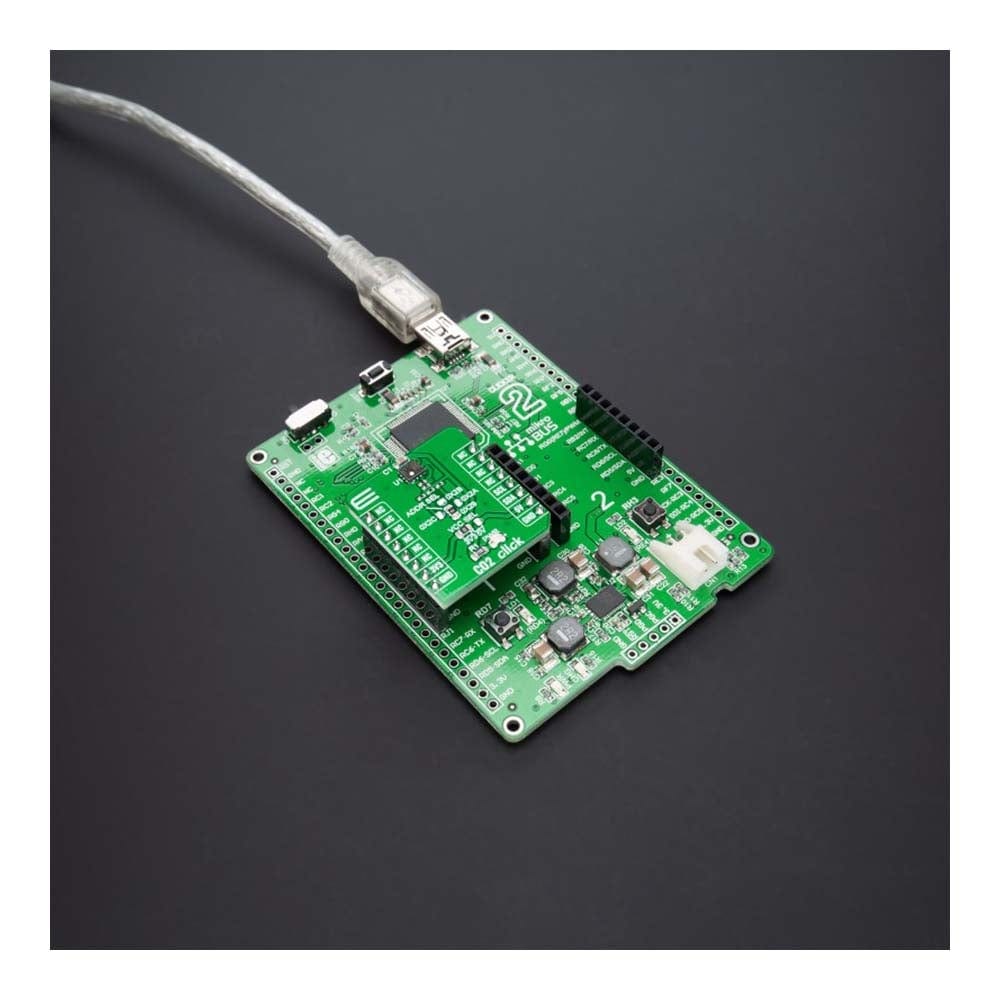
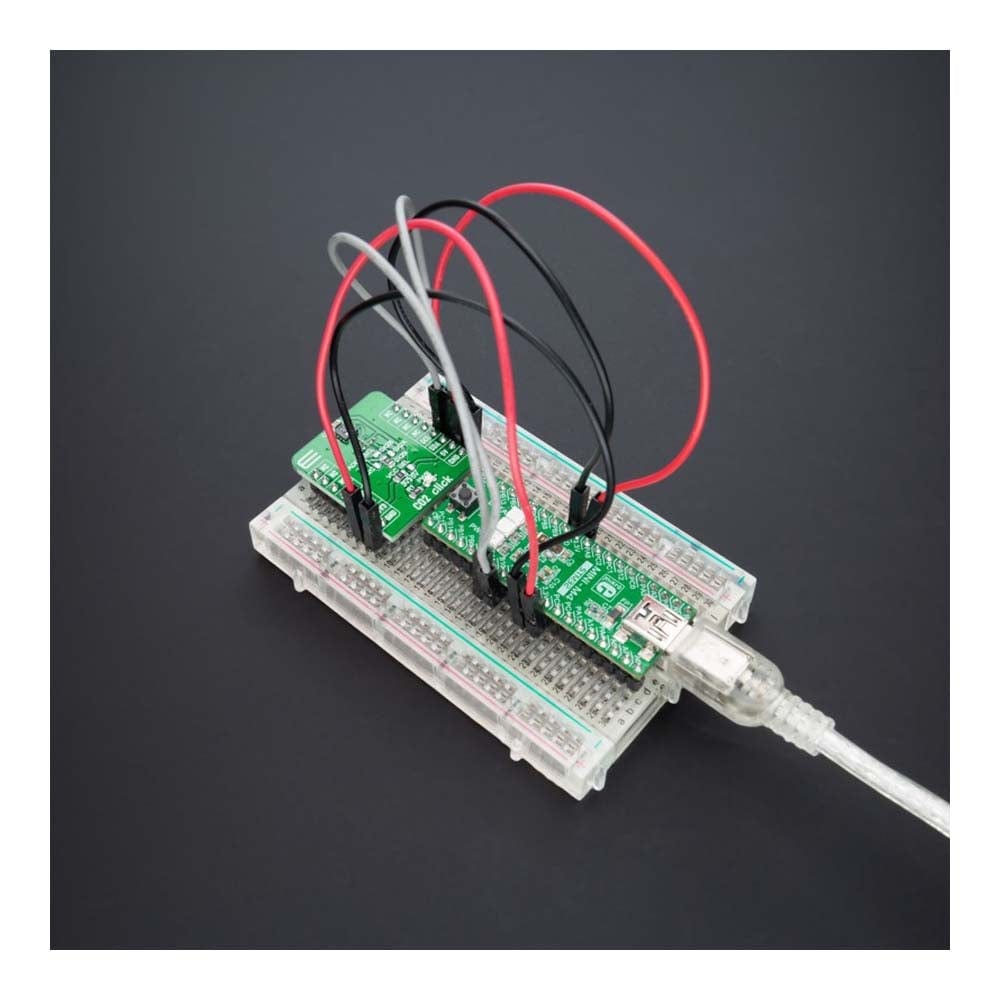
Overview
The CO2 Click Board™ is a compact add-on board that contains Sensirion’s miniature CO₂ sensor. This board features the STC31, a gas concentration sensor designed for high-volume applications. The STC31 utilizes a revolutionized thermal conductivity measurement principle, which results in superior repeatability and long-term stability. The outstanding performance of these sensors is based on Sensirion’s patented CMOSens® sensor technology, which combines the sensor element, signal processing, and digital calibration on a small CMOS chip. It features a digital I2C interface, which makes it easy to connect directly to MCU. This Click board™ represents an ideal choice for health, environmental, industrial, residential monitoring of high CO2 concentrations and applications where reliability is crucial.
The CO2 Click Board™ is supported by a mikroSDK compliant library, which includes functions that simplify software development. This Click board™ comes as a fully tested product, ready to be used on a system equipped with the mikroBUS™ socket.
Downloads
La carte Click Board™ CO2 est une carte complémentaire compacte qui contient le capteur miniature de CO₂ de Sensirion. Cette carte comprend le STC31, un capteur de concentration de gaz conçu pour les applications à volume élevé. Le STC31 utilise un principe de mesure de conductivité thermique révolutionnaire, qui se traduit par une répétabilité supérieure et une stabilité à long terme. Les performances exceptionnelles de ces capteurs sont basées sur la technologie de capteur brevetée CMOSens® de Sensirion, qui combine l'élément capteur, le traitement du signal et l'étalonnage numérique sur une petite puce CMOS. Il dispose d'une interface numérique I2C, ce qui facilite la connexion directe au MCU. Cette carte Click™ représente un choix idéal pour la surveillance sanitaire, environnementale, industrielle et résidentielle des concentrations élevées de CO2 et des applications où la fiabilité est cruciale.
La carte Click Board™ CO2 est supportée par une bibliothèque compatible mikroSDK, qui comprend des fonctions qui simplifient le développement logiciel. Cette carte Click Board™ est livrée sous forme de produit entièrement testé, prêt à être utilisé sur un système équipé du socket mikroBUS™.
| General Information | |
|---|---|
Part Number (SKU) |
MIKROE-4725
|
Manufacturer |
|
| Physical and Mechanical | |
Weight |
0.02 kg
|
| Other | |
Country of Origin |
|
HS Code Customs Tariff code
|
|
EAN |
8606027389542
|
Warranty |
|
Frequently Asked Questions
Have a Question?
Be the first to ask a question about this.







